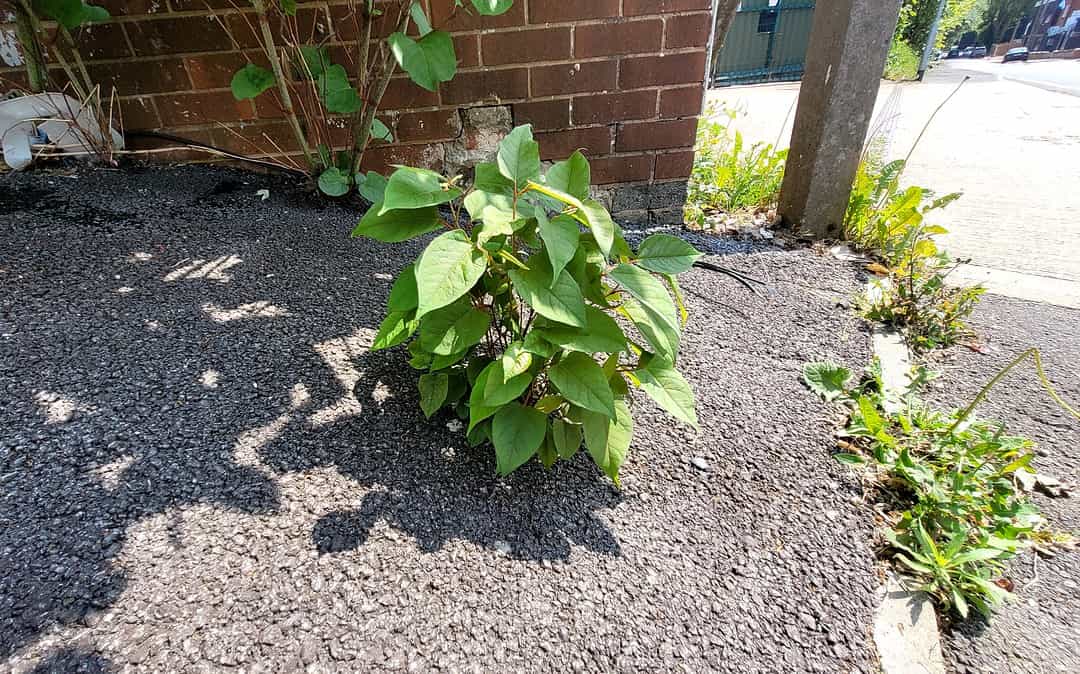Can you suffocate knotweed?
When Japanese knotweed is suffocated, it refers to a method of control where the plant is deprived of light, air, and resources necessary for its growth. Suffocating Japanese knotweed typically involves covering it with a barrier or a dense material. This is done to prevent sunlight from reaching the plant and to restrict its access to nutrients and water.
When the plant is suffocated, several things happen:
- Lack of sunlight: By blocking sunlight, the process of photosynthesis is hindered. Photosynthesis is essential for plants to produce energy and without it. Therefore more Japanese knotweed cannot generate the resources it needs for growth and survival.
- Deprivation of air: By covering the plant, the barrier limits the exchange of gases, such as carbon dioxide and oxygen. This can disrupt respiration, which is vital for the plant’s metabolic processes.
- Nutrient and water restriction: Japanese knotweed relies on nutrients and water from the soil for its growth. When it is suffocated, the barrier impedes the plant’s access to these essential resources. Over time, this deprivation weakens the plant and inhibits its ability to thrive.
- Weakening and gradual decline: As a result of the above factors, suffocating Japanese knotweed weakens the plant. Without sufficient energy, nutrients, and resources, its growth becomes stunted, and over time, it may start to decline and eventually die.
The plant is known for its resilience and persistence
It’s important to note that suffocating Japanese knotweed alone may not be a foolproof method of eradication. The plant is known for its resilience and persistence. Professional assistance and a comprehensive management plan that may include multiple control methods are often recommended for effective long-term control of Japanese knotweed.
Moreover, this method may take many years to be effective and it’s necessary to keep the area covered to prevent the growth of new shoots. Additionally, it’s important to make sure the plastic or mulch is in contact with the soil, not just the leaves and stems.
Another important thing to consider is that this method does not address the roots of the plant. Therefore this means that if the roots are not removed or treated, the plant can regrow. Suffocating Japanese knotweed can be an effective method to control plant-limited situations. It’s always best to consult with an expert to determine the best course of action for controlling Japanese knotweed. They will consider the size of the infestation, location, surrounding environment, and any regulations that apply.
Survival mode or dormancy (quiescence)
During quiescence, Japanese knotweed may exhibit various adaptive responses, including:
- Reduced growth: The plant slows down or halts its growth processes, including the production of new shoots, leaves, and flowers. This allows it to conserve energy and allocate resources for survival.
- Dormant buds: Japanese knotweed can develop dormant buds, which are underground structures that can remain inactive for extended periods. These buds serve as a reservoir for regrowth when more favourable conditions arise.
- Altered physiological processes: The plant adjusts its physiological functions to cope with stress. This can involve changes in hormone levels, enzyme activities, and water and nutrient uptake, enabling the plant to withstand adverse conditions.
- Resource allocation: Japanese knotweed reallocates its resources to essential survival functions rather than growth and reproduction. This includes diverting resources to the roots for storage and improving nutrient uptake efficiency.
By entering quiescence, Japanese knotweed increases its chances of survival during challenging circumstances. It allows the plant to withstand adverse conditions and resume growth when more favorable conditions become available. Therefore, it is important to employ comprehensive and persistent control strategies to target Japanese knotweed during both active growth phases and quiescent periods to effectively manage its spread and regrowth.
